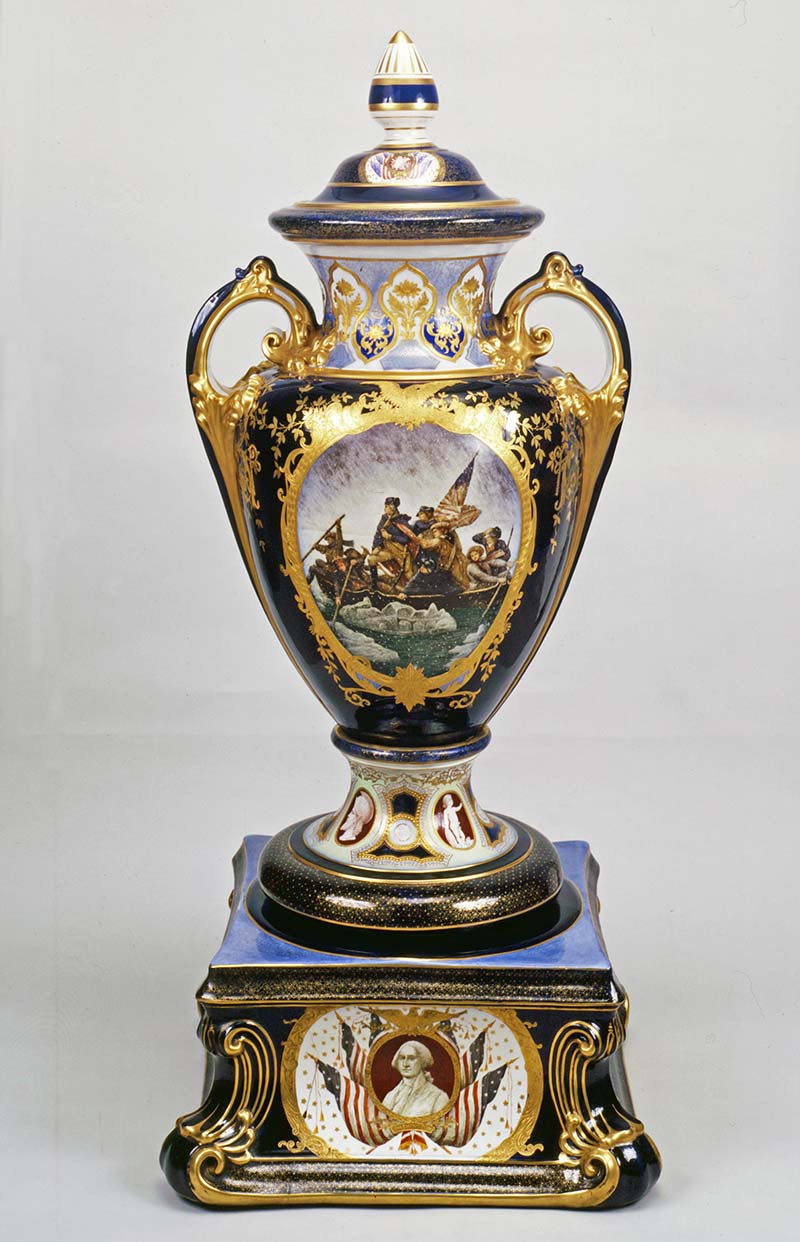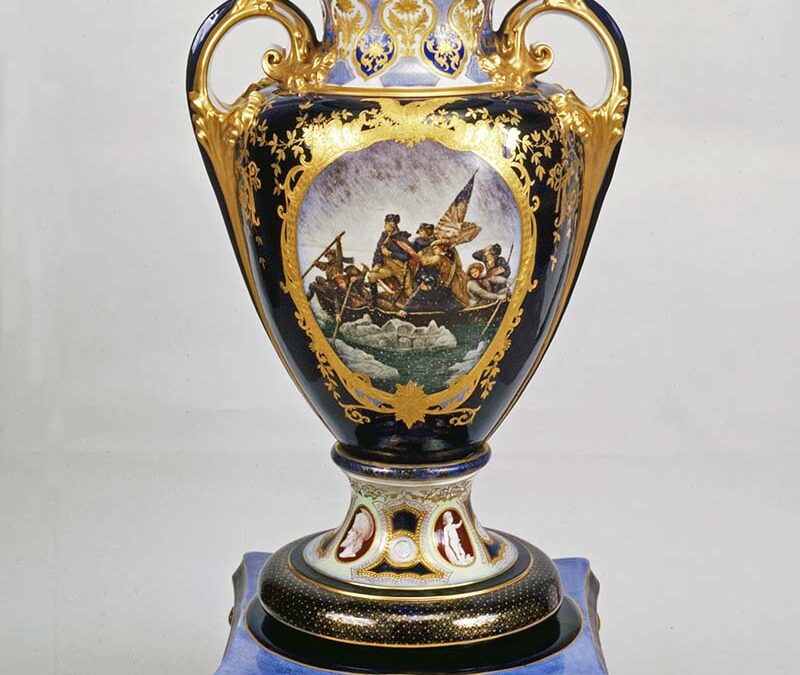
| Maker | Trenton Potteries Company |
| Date of Creation | 1904 |
| Location | Trenton, New Jersey |
| Materials | Porcelain |
| Institution | New Jersey State Museum |
| Credit Line | Gift of Trenton Potteries Company |
| Accession Number | CH359a-d |
| Photo Credit | New Jersey State Museum |
December 25, 1776…A bitter wind swept across a river filled with winter ice floes. But frigid temperatures and an impending storm were not enough to convince George Washington to cancel his daring plan to surprise the Hessian troops in New Jersey. Things had gone poorly in 1776, and he desperately needed a victory. The military password of the day was resolute: “Victory… or Death.” For Continental soldiers, the crossing of the Delaware facilitated their decisive victory at the Battle of Trenton. It also created an American icon. In 1904, the Trenton Potteries Company chose Washington’s crossing as the subject for the “Trenton Vase,” a monumental, four-and-a-half-foot-tall porcelain urn to be displayed at the Louisiana Purchase Exposition in St. Louis. Lucien Boullemier, the urn’s artist, used Emanuel Leutze’s famous 1851 painting of the crossing (now at The Metropolitan Museum of Art) as his inspiration for the overglaze painting. A composite work of six skilled craftsmen, the urn required seven kiln firings in order to bring out the brilliant colors. It was one of five grandiose urns made by the Trenton Potteries Company, each with a similar form but different decoration. This and three others traveled to Missouri and were displayed among the company’s main commercial products: bathtubs, toilets, sinks and other sanitary-ware fixtures. Called a “Triumph of American Potting” in the June 2, 1904, issue of Crockery and Glass Journal, the Trenton Vase is a lasting testament to the historical significance of New Jersey’s capital city to the growth and development of the American ceramics industry. The Trenton Potteries Company was just one of hundreds of potteries that called the city home, earning it the nickname “Staffordshire of America.” The use of Washington’s famous Delaware River crossing (which occurred just a few miles upriver from Trenton) as the central decorative motif illustrates how that seminal Revolutionary War event continued to define the collective identities of New Jerseyans for generations.

